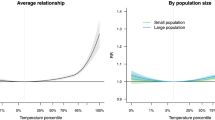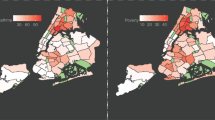Abstract
Purpose of Review
The inter-correlated nature of exposure-based risk factors in environmental health studies makes it a challenge to determine their combined effect on health outcomes. As such, there has been much research of late regarding the development and utilization of methods in the field of multi-pollutant modeling. However, much of this work has focused on issues related to variable selection in a regression context, with the goal of identifying which exposures are the “bad actors” most responsible for affecting the health outcome of interest. However, the question addressed by these approaches does not necessarily represent the only or most important questions of interest in a multi-pollutant modeling context, where researchers may be interested in health effects from co-exposure patterns and in identifying subpopulations associated with patterns defined by different levels of constituent exposures.
Recent Findings
One approach to analyzing multi-pollutant data is to use a method known as Bayesian profile regression, which aids in identifying susceptible subpopulations associated with exposure mixtures defined by different levels of each exposure. Identification of exposure-level patterns that correspond to a location may provide a starting point for policy-based exposure reduction. Also, in a spatial context, identification of locations with the most health-relevant exposure-mixture profiles might provide further policy relevant information.
Summary
In this brief report, we review and describe an approach that can be used to identify exposures in subpopulations or locations known as Bayesian profile regression. An example is provided in which we examine associations between air pollutants, an indicator of healthy food retailer availability, and indicators of poverty in Los Angeles County. A general tread suggesting that vulnerable individuals are more highly exposed and have limited access to healthy food retailers is observed, though the associations are complex and non-linear.



Similar content being viewed by others
References
Papers of particular interest, published recently, have been highlighted as: • Of importance •• Of major importance
Uzoigwe JC, Prum T, Bresnahan E, Garelnabi M. The emerging role of outdoor and indoor air pollution in cardiovascular disease. N Am J Med Sci. 2013;5:445–53.
Molitor J, Papathomas M, Jerrett M, Richardson S. Bayesian profile regression with an application to the National Survey of Children’s Health. Biostatistics. 2010;11(3):484–98. https://doi.org/10.1093/biostatistics/kxq013.
Davalos AD, Luben TJ, Herring AH, Sacks JD. Current approaches used in epidemiologic studies to examine short-term multipollutant air pollution exposures. Ann Epidemiol. 2017;27(2):145–153.e1. https://doi.org/10.1016/j.annepidem.2016.11.016.
Coker E, Ghosh J, Jerrett M, Gomez-Rubio V, Beckerman B, Cockburn M, et al. Modeling spatial effects of PM2.5 on term low birth weight in Los Angeles County. Environ Res. 2015;142:354–64. https://doi.org/10.1016/j.envres.2015.06.044.
Liverani S, Hastie DI, Azizi L, Papathomas M, Richardson S. PReMiuM: an R package for profile regression mixture models using Dirichlet processes. J Stat Softw. 2015;64(7):1–30. https://doi.org/10.18637/jss.v064.i07.
Dunson DB, Herring AH, Siega-Riz AM. Bayesian inference on changes in response densities over predictor clusters. J Am Stat Assoc. 2008;103(484):1508–17. https://doi.org/10.1198/016214508000001039.
Bigelow JL, Dunson DB. Bayesian semiparametric joint models for functional predictors. J Am Stat Assoc. 2009;104(485):26–36. https://doi.org/10.1198/jasa.2009.0001.
Molitor J, Su JG, Molitor N-T, Rubio VG, Richardson S, Hastie D, et al. Identifying vulnerable populations through an examination of the association between multipollutant profiles and poverty. Environ Sci Technol. 2011;45(18):7754–60. https://doi.org/10.1021/es104017x.
Papathomas M, Molitor J, Richardson S, Riboli E, Vineis P. Examining the joint effect of multiple risk factors using exposure risk profiles: lung cancer in nonsmokers. Environ Health Perspect. 2011;119(1):84–91. https://doi.org/10.1289/ehp.1002118.
Christenfeld NJS, Sloan RP, Carroll D, Greenland S. Risk factors, confounding, and the illusion of statistical control. Psychosom Med. 2004;66(6):868–75. https://doi.org/10.1097/01.psy.0000140008.70959.41.
Zanobetti A, Austin E, Coull BA, Schwartz J, Koutrakis P. Health effects of multi-pollutant profiles. Environ Int. 2014;71:13–9. https://doi.org/10.1016/j.envint.2014.05.023.
Austin E, Coull B, Thomas D, Koutrakis P. A framework for identifying distinct multipollutant profiles in air pollution data. Environ Int. 2012;45:112–21. https://doi.org/10.1016/j.envint.2012.04.003.
Crépet A, Héraud F, Béchaux C, Gouze ME, Pierlot S, Fastier A, et al. The PERICLES research program: an integrated approach to characterize the combined effects of mixtures of pesticide residues to which the French population is exposed. Toxicology. 2013;313(2-3):83–93. https://doi.org/10.1016/j.tox.2013.04.005.
Tadesse MG, Sha N, Vannucci M. Bayesian variable selection in clustering high-dimensional data. J Am Stat Assoc. 2005;100(470):602–17. https://doi.org/10.1198/016214504000001565.
Barcella W, Iorio MD, Baio G, Malone-Lee J. Variable selection in covariate dependent random partition models: an application to urinary tract infection: variable selection in covariate dependent random partition models: an application to urinary tract infection. Stat Med. 2016;35(8):1373–89. https://doi.org/10.1002/sim.6786.
Coker E, Liverani S, Ghosh JK, Jerrett M, Beckerman B, Li A, et al. Multi-pollutant exposure profiles associated with term low birth weight in Los Angeles County. Environ Int. 2016;91:1–13. https://doi.org/10.1016/j.envint.2016.02.011.
Madigan D, Raftery AE. Model selection and accounting for model uncertainty in graphical models using Occam’s window. J Am Stat Assoc. 1994;89(428):1535–46. https://doi.org/10.1080/01621459.1994.10476894.
Kaufman L, Rousseeuw PJ. Finding groups in data: an introduction to cluster analysis. Hoboken: Wiley-Interscience; 2005.
Vlissides J, Helm R, Johnson R, Gamma E. Design patterns: elements of reusable object-oriented software, vol. 49. Read: Addison-Wesley; 1995. p. 11.
Coker E, Gunier R, Bradman A, Harley K, Kogut K, Molitor J, et al. Association between pesticide profiles used on agricultural fields near maternal residences during pregnancy and IQ at age 7 years. Int J Environ Res Public Health. 2017;14(5):506. https://doi.org/10.3390/ijerph14050506.
Hastie DI, Liverani S, Azizi L, Richardson S, Stücker I. A semi-parametric approach to estimate risk functions associated with multi-dimensional exposure profiles: application to smoking and lung cancer. BMC Med Res Methodol. 2013;13(1):129. https://doi.org/10.1186/1471-2288-13-129.
• Ko Y-A, Mukherjee B, Smith JA, SLR K, Allison M, Diez Roux AV. Classification and clustering methods for multiple environmental factors in gene–environment interaction: application to the multi-ethnic study of atherosclerosis. Epidemiology. 2016;27(6):870–8. https://doi.org/10.1097/EDE.0000000000000548 We highlight this study because it demonstrates how profile regression can be coupled with genetic information to identify populations potentially susceptible to the health effects from environmental pollution due to gene by environment interaction.
Mattei F, Liverani S, Guida F, Matrat M, Cenée S, Azizi L, et al. Multidimensional analysis of the effect of occupational exposure to organic solvents on lung cancer risk: the ICARE study. Occup Environ Med. 2016;73(6):368–77. https://doi.org/10.1136/oemed-2015-103177.
Papathomas M, Molitor J, Richardson S, Riboli E, Vineis P. Examining the joint effect of multiple risk factors using exposure risk profiles: lung cancer in nonsmokers. Environ Health Perspect. 2010;119(1):84–91. https://doi.org/10.1289/ehp.1002118.
Pirani M, Best N, Blangiardo M, Liverani S, Atkinson RW, Fuller GW. Analysing the health effects of simultaneous exposure to physical and chemical properties of airborne particles. Environ Int. 2015;79:56–64. https://doi.org/10.1016/j.envint.2015.02.010.
Shekhar S, Yoo E-H, Ahmed SA, Haining R, Kadannolly S. Analysing malaria incidence at the small area level for developing a spatial decision support system: a case study in Kalaburagi, Karnataka, India. Spat Spatio-Temporal Epidemiol. 2017;20:9–25. https://doi.org/10.1016/j.sste.2016.12.002.
•• Liverani S, Lavigne A, Blangiardo M. Modelling collinear and spatially correlated data. Spat Spatio-Temporal Epidemiol. 2016;18:63–73. https://doi.org/10.1016/j.sste.2016.04.003. This study is particularly helpful because it provides a description on how to implement the prediction profiles and how to interpret the results of predicted outcomes in relation to different profiles.
•• Molitor J, Coker E, Jerrett M, Ritz B, Li A, Health Review Committee (2016) Part 3. Modeling of multipollutant profiles and spatially varying health effects with applications to indicators of adverse birth outcomes. Res Rep Health Eff Inst 3–47. This study is particularly important because it portrays the adaptability of profile regression to a variety of study questions in regard to susceptible populations. For instance, multiple air pollutants or combined social, demographic, built environment may be of interest or, alternatively, combined pollutants and social, demographic, and built environment factors.
Molitor J, Fortunato L, Molitor N-T, Richardson S (2010) Examining the association between deprivation profiles and air pollution in greater London using Bayesian Dirichlet process mixture models. COMPSTAT2010.
Papathomas M, Molitor J, Hoggart C, Hastie D, Richardson S. Exploring data from genetic association studies using Bayesian variable selection and the Dirichlet process: application to searching for gene × gene patterns: searching for gene × gene patterns. Genet Epidemiol. 2012;36(6):663–74. https://doi.org/10.1002/gepi.21661.
Molitor J, Brown IJ, Chan Q, Papathomas M, Liverani S, Molitor N, et al. Blood pressure differences associated with Optimal Macronutrient Intake Trial for Heart Health (OMNIHEART)-like diet compared with a typical American DietNovelty and significance. Hypertension. 2014;64(6):1198–204. https://doi.org/10.1161/HYPERTENSIONAHA.114.03799.
Domany K, Nava-Guerra L, McConnel K, Khoo M, Carroll J, Hossain M, Huang G, Amin R (2017) Cardiorespiratory control in premature children and the risk of sleep disorder breathing.
Phillips AE, Molitor J, Boily MC, Lowndes CM, Gurav K, Blanchard J, et al. Informal confidential voting interviewing in a sexual risk assessment of men who have sex with men (MSM) and transgenders (hijra) in Bangalore, India. Sex Transm Infect. 2013;89(3):245–50. https://doi.org/10.1136/sextrans-2011-050373.
Crespo Cuaresma J, Grün B, Hofmarcher P, Humer S, Moser M. Unveiling covariate inclusion structures in economic growth regressions using latent class analysis. Eur Econ Rev. 2016;81:189–202. https://doi.org/10.1016/j.euroecorev.2015.03.009.
Su JG, Morello-Frosch R, Jesdale BM, Kyle AD, Shamasunder B, Jerrett M. An index for assessing demographic inequalities in cumulative environmental hazards with application to Los Angeles, California. Environ Sci Technol. 2009;43(20):7626–34. https://doi.org/10.1021/es901041p.
CDC (2011) Children’s Food Environment State Indicator Report. https://www.cdc.gov/obesity/downloads/childrensfoodenvironment.pdf, Accessed 20 Aug 2017.
Author information
Authors and Affiliations
Corresponding author
Ethics declarations
Conflict of Interest
Eric Coker reports grants from Health Resources and Services Administration (HRSA) and grants from Fogarty International Center, Global Health Equity Scholar. John Molitor, Silvia Liverani, and Jason G. Su declare that they have no conflict of interest.
Human and Animal Rights and Informed Consent
This article does not contain any studies with human or animal subjects performed by any of the authors.
Additional information
This article is part of the Topical Collection on Susceptibility Factors in Environmental Health
Rights and permissions
About this article
Cite this article
Coker, E., Liverani, S., Su, J.G. et al. Multi-pollutant Modeling Through Examination of Susceptible Subpopulations Using Profile Regression. Curr Envir Health Rpt 5, 59–69 (2018). https://doi.org/10.1007/s40572-018-0177-0
Published:
Issue Date:
DOI: https://doi.org/10.1007/s40572-018-0177-0




